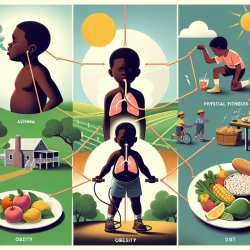Introduction
In the evolving landscape of digital health, gamification has emerged as a powerful tool to enhance user engagement and improve health outcomes. The recent study titled "The regulatory status of health apps that employ gamification" sheds light on the compliance and risks associated with gamified health apps. As practitioners focused on improving child outcomes, understanding these insights can significantly enhance the effectiveness of interventions.
The Power of Gamification in Health Apps
Gamification involves integrating game design elements such as points, badges, and leaderboards into non-game contexts to boost user engagement. In health apps, this approach can motivate children to participate actively in their therapy, making the process enjoyable and less daunting. The study highlights that while gamification can be beneficial, it also presents unique challenges, especially concerning regulatory compliance and safety.
Regulatory Challenges and Compliance
The study assessed 69 gamified health apps for compliance with the EU Medical Device Regulation (MDR). Alarmingly, 44.9% of these apps were potentially non-compliant, lacking necessary regulatory approvals. This finding underscores the importance of ensuring that health apps used in clinical settings meet stringent safety and efficacy standards.
For practitioners, this means being vigilant about the apps they recommend or use in therapy. Ensuring that these tools are compliant not only protects users but also enhances the credibility and effectiveness of the therapeutic interventions.
Implementing Study Insights for Better Outcomes
To leverage the benefits of gamification while mitigating risks, practitioners can take the following steps:
- Research and Verify: Before integrating a gamified app into therapy, verify its compliance status and review any available clinical evidence supporting its efficacy.
- Engage with Developers: Collaborate with app developers to ensure that the apps meet regulatory standards and are tailored to the specific needs of children.
- Monitor and Evaluate: Continuously monitor the app's performance and its impact on therapy outcomes. Gather feedback from users to identify any issues or areas for improvement.
Encouraging Further Research
The study also highlights the need for more robust research and randomized controlled trials to better understand the long-term effects of gamification in health apps. Practitioners can contribute to this body of knowledge by participating in research initiatives and sharing their experiences and outcomes.
Conclusion
Gamification holds immense potential to transform health interventions for children, making them more engaging and effective. However, it is crucial to navigate the regulatory landscape carefully to ensure safety and compliance. By staying informed and proactive, practitioners can harness the power of gamification to achieve remarkable outcomes for the children they serve.
To read the original research paper, please follow this link: The regulatory status of health apps that employ gamification.










